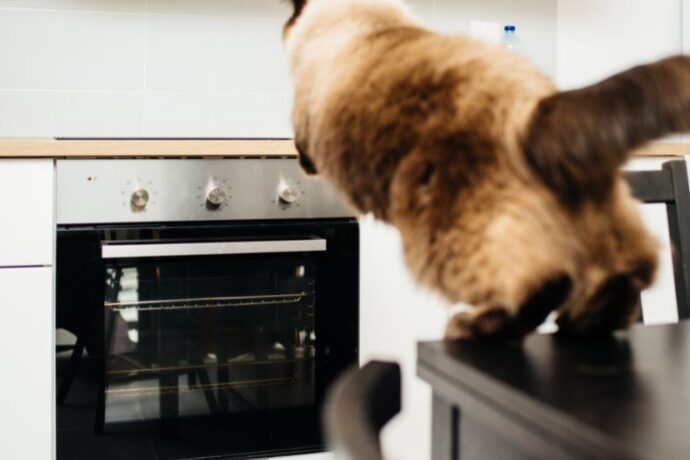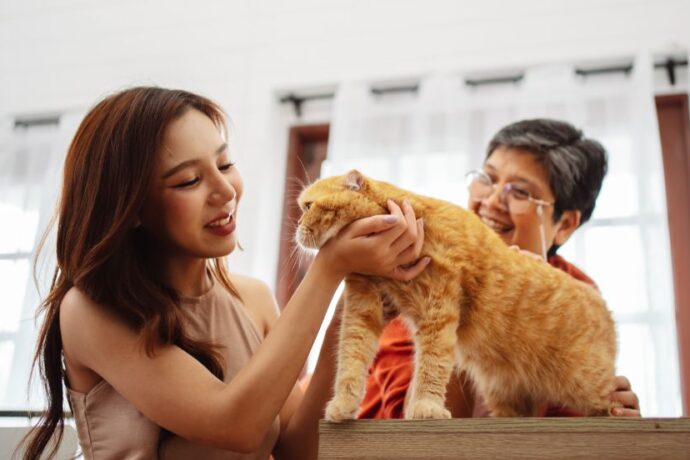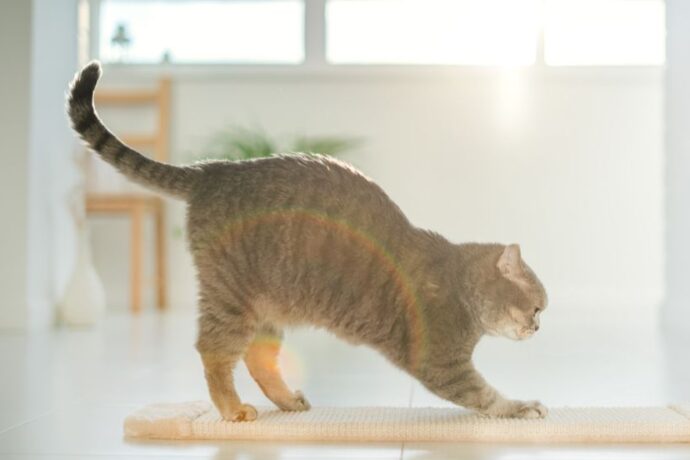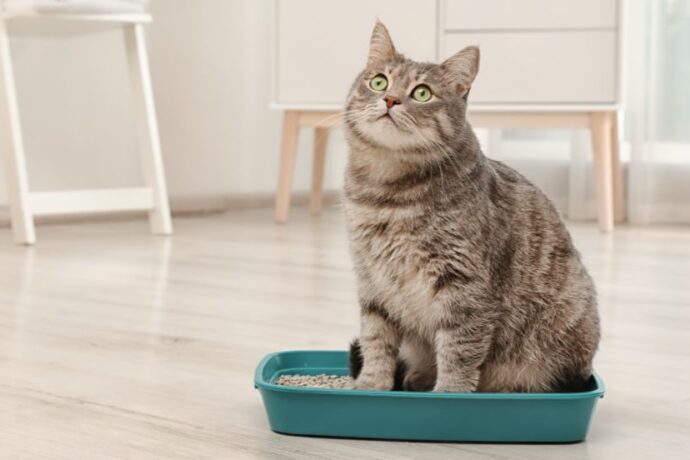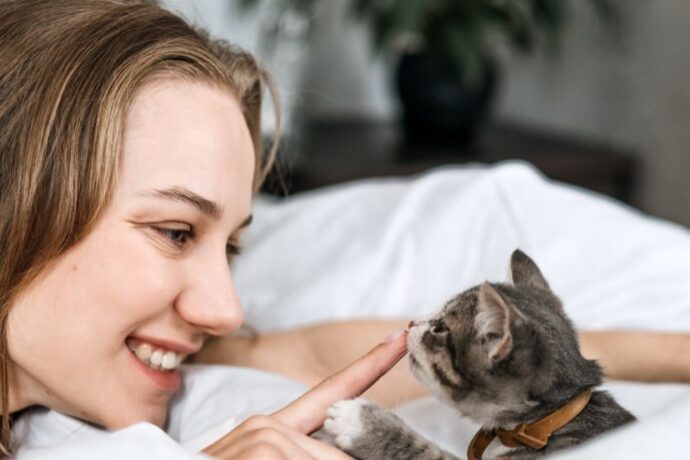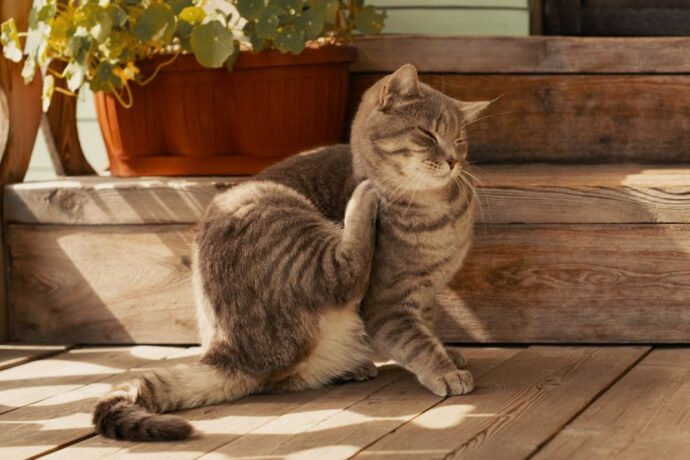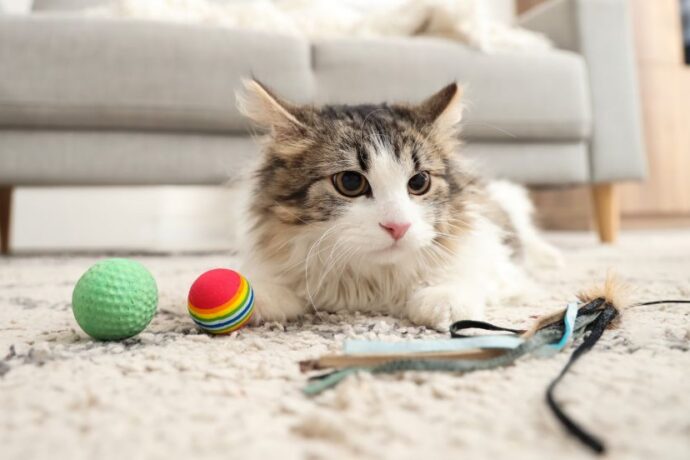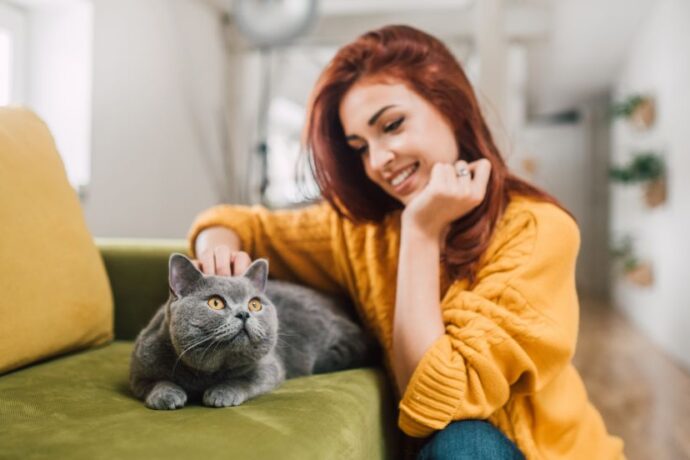Cats are fascinating, independent, and often mysterious creatures. One moment they’re curling up on your lap, purring like an angel, and the next, they’re darting around the house at full speed, swatting at invisible “ghosts.” These quirky behaviors often leave cat owners puzzled — but rest assured, most of these antics have logical explanations rooted in instinct, communication, and feline psychology.
In this article, we’ll explore 15 weird cat behaviors, understand what they mean, and share expert insights backed by science. By the end, you’ll better understand your cat’s strange habits and strengthen your bond with your furry companion.
Understanding Normal Cat Behavior
Before we dive into the weird stuff, it’s important to know what’s considered “normal” cat behavior. Cats are naturally curious, territorial, and independent animals, but they also crave safety, affection, and routine.
Typical cat behaviors include
- Purring – Expressing comfort, affection, or even self-soothing during stress.
- Kneading (“making biscuits”) – A leftover kitten instinct to stimulate milk flow, often indicating happiness.
- Scratching surfaces – Cats scratch to sharpen claws, mark territory, and relieve stress.
- Hunting play – Stalking, pouncing, and chasing mimic their wild hunting instincts.
Once you understand what’s normal, you can better identify when your cat’s behavior is quirky but harmless — or a possible sign of something deeper.
15 Weird Cat Behaviors and What They Mean
1. Zoomies at 3 A.M.

Ever been woken up by your cat racing around the house like it’s possessed?
- Why it happens: Cats are crepuscular — naturally more active during dawn and dusk. Indoor cats often store up excess energy, which explodes at night.
- Expert tip: Provide more playtime and interactive toys during the day to tire them out before bedtime.
2. Knocking Things Off Tables
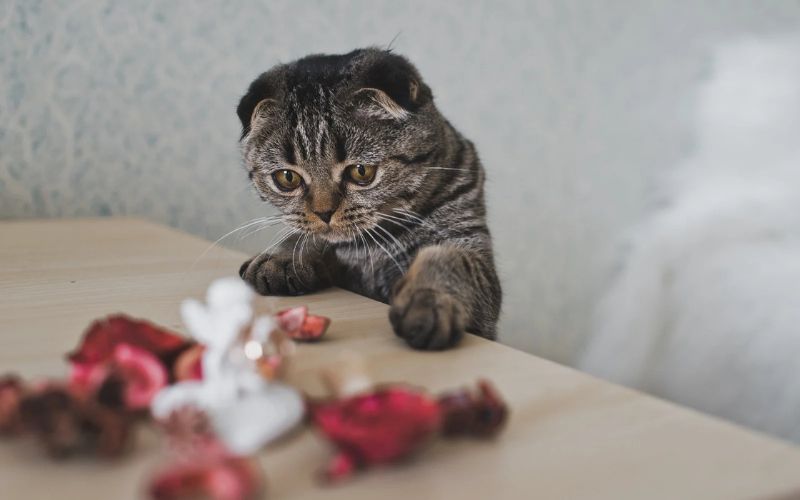
Cats love batting objects off shelves and watching them fall — but why?
- Why it happens: It’s linked to hunting instincts. Cats use their paws to test, swat, and “kill” prey-like objects. Sometimes, it’s also a way to get your attention.
- Expert tip: Provide safe toys and puzzle feeders to satisfy their curiosity.
3. Chattering at Birds
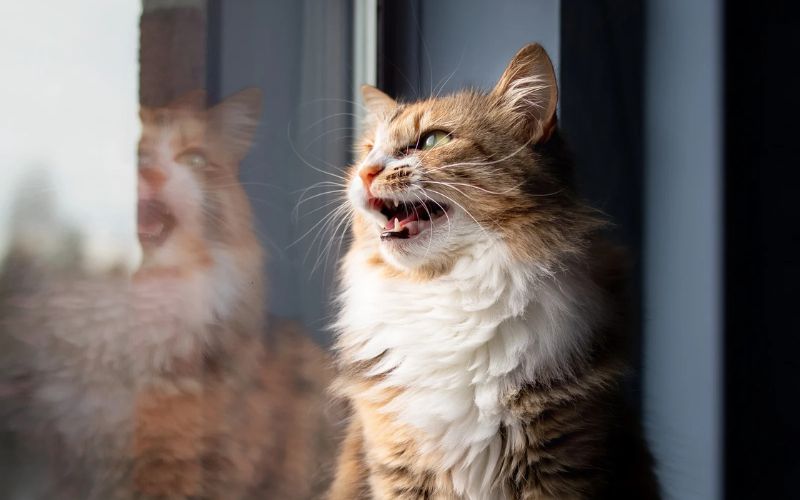
Your cat spots a bird outside and suddenly makes a strange “chattering” or “clicking” noise.
- Why it happens: Researchers believe this behavior mimics the killing bite, expressing frustration at not being able to hunt.
- Scientific insight: A study published in Behavioural Processes suggests this is a predatory reflex triggered by visual prey stimuli (1).
4. Sleeping in Tiny, Weird Spots
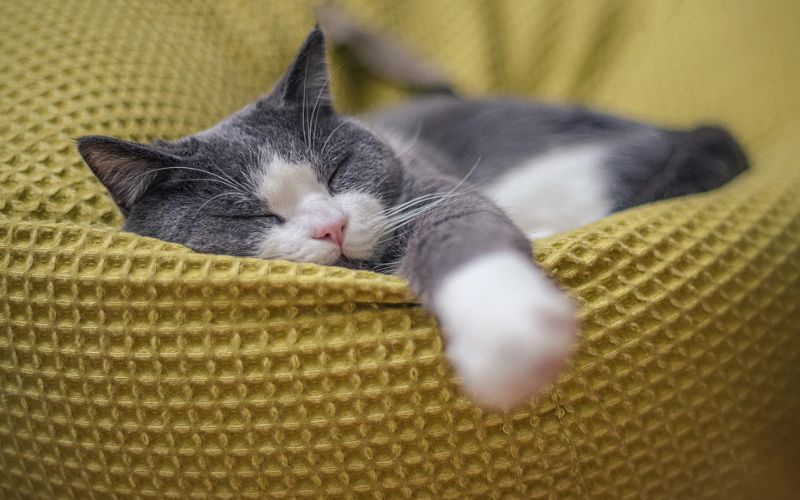
From shoeboxes to laundry baskets, cats love squeezing into unusual places.
- Why it happens: Small, enclosed spaces make cats feel secure and hidden, much like dens in the wild.
- Expert tip: Offer cozy cat caves or enclosed beds to give them safe resting areas.
5. Kneading Blankets (or You!)
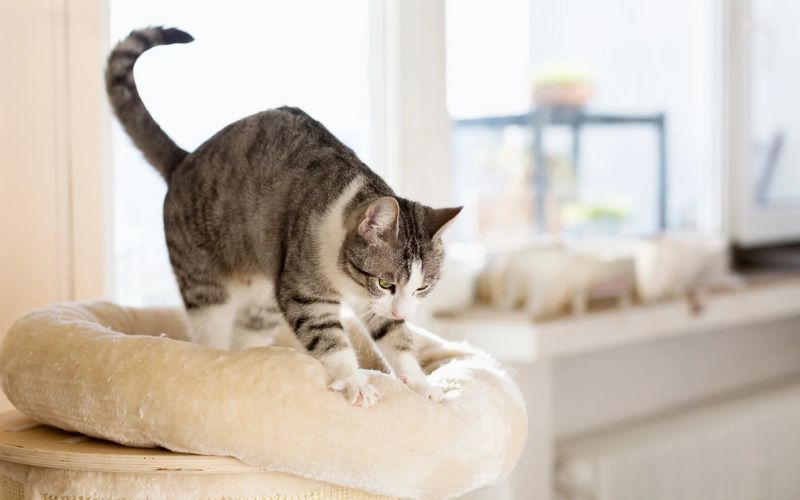
Cats “make biscuits” by rhythmically pressing their paws into soft surfaces.
- Why it happens: It’s a comforting behavior left over from kittenhood, when kneading stimulated milk flow. It’s also a sign your cat feels safe and content.
- Expert tip: Let them knead! It’s a positive bonding behavior.
6. Tail Twitching and Flicking
Cats communicate a lot through their tails.
- Why does it happen
- Fast twitching: Excitement, agitation, or hunting focus.
- Slow swish: Mild irritation.
- Quivering tail: Happiness and anticipation, especially during greetings.
- Expert tip: Learn your cat’s “tail language” to better understand their mood.
7. Head-Butting (Bunting)
When your cat bumps its head against you, it’s more than affection.
- Why it happens: Cats have scent glands on their heads and use bunting to mark you as “theirs.” It’s also a gesture of trust and bonding.
8. Sleeping on Your Laptop or Book
Every time you work or read, your cat decides to sit on top of it.
- Why does this happen
- Cats love warmth, and laptops radiate heat.
- They also want your attention and prefer to be near you.
Expert tip: Set up a cozy bed or heated mat nearby to redirect them without discouraging closeness.
9. Biting Out of Nowhere
Sometimes, gentle petting suddenly turns into a sharp nip.
- Why it happens: Known as petting-induced aggression, cats have sensitive nerve endings, and overstimulation can trigger a bite.
Expert tip: Watch for early warning signs — tail flicks, ear twitches, or skin rippling — and stop petting before your cat gets overwhelmed.
10. Licking Plastic Bags
It’s not uncommon to find your cat licking plastic packaging.
- Why it happens: Some plastics contain animal fats or scents that attract cats. In rare cases, it may be linked to pica, a condition where cats crave non-food items.
Expert tip: Keep plastic bags out of reach and offer safer chewing alternatives like dental treats or cat grass.
11. Bringing You “Gifts”
Whether it’s a toy, sock, or — unfortunately — a dead mouse, your cat proudly drops “presents” at your feet.
- Why it happens: This mimics natural hunting behavior. In multi-cat households, it’s also a way to share resources and “teach” you how to hunt.
Expert tip: Praise your cat for the gesture, even if the gift is unwelcome — scolding may cause stress.
12. Staring at You Without Blinking
Long, unbroken stares from your cat can feel intense.
- Why it happens: Cats stare to observe, communicate, and build trust. However, a fixed, dilated stare combined with a stiff posture may signal aggression.
Expert tip: Offer “slow blinks” back — it mimics cat affection and can strengthen your bond.
13. Running Sideways with Arched Back
This cartoonish move usually happens during playtime.
- Why it happens: Sideways running, puffed-up fur, and arched backs are mock-aggressive displays meant for playful intimidation.
Expert tip: Encourage safe play by providing toys and climbing structures.
14. Drinking from the Faucet Instead of the Bowl
Some cats refuse water bowls but happily drink from sinks.
- Why it happens: Flowing water seems fresher to cats and mimics natural streams in the wild.
Expert tip: Invest in a cat water fountain to keep them hydrated while indulging this preference.
15. Knocking Over Their Food or Water Bowl
Cats sometimes flip or paw at their bowls during meals.
Why does it happen
- Whisker fatigue from deep bowls touching sensitive whiskers.
- Instinctive “hunting” behavior to move food around.
- Disliking stale or old water.
Expert tip: Use shallow, wide bowls and refresh water regularly.
Scientific Insights into Feline Behaviors
Studies in feline behavior, including research published in the Journal of Feline Medicine and Surgery, reveal that most “weird” cat behaviors are deeply rooted in survival instincts, environmental adaptation, and emotional expression (2). For example:
- Kneading and bunting are linked to kittenhood bonding behaviors.
- Chattering and zoomies mimic hunting and prey-chasing instincts.
- Sleeping in boxes provides comfort and stress relief.
By understanding the science behind these quirks, cat parents can differentiate between harmless antics and behaviors that require veterinary attention.
FAQs About Weird Cat Behaviors
1. Why does my cat suddenly get the zoomies?
A. Zoomies are bursts of pent-up energy, common in healthy cats. Increase play sessions and interactive toys to channel that energy.
2. Is it normal for my cat to chatter at birds?
A. Yes. Chattering is an instinctive hunting reflex. It’s normal and harmless, though you can offer bird-themed toys to satisfy this drive indoors.
3. Should I be worried if my cat licks plastic?
A. Occasional licking is fine, but persistent chewing or ingestion of non-food items could indicate pica or nutritional deficiencies — consult your vet if it continues.
Conclusion
Cats are complex, intelligent, and endlessly fascinating. What may seem like strange or “weird” behavior often has deep evolutionary roots or emotional meanings. By observing, understanding, and responding to these habits, you’ll foster a stronger bond and ensure your feline friend’s happiness and well-being.
References




